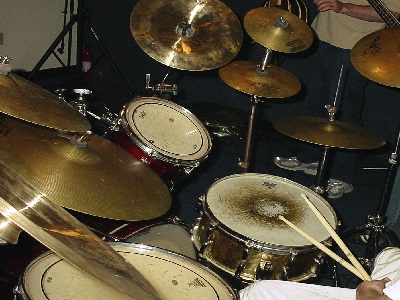What Are Linear Fusion Groove Fills?
 When it comes to playing music, there are a number of learning curves one might want to follow. One is based on selecting a few capacities and taking them to the maximum. The other is based on what I call “stratification”: the accumulation of various skills seemingly unrelated to each other and connecting the dots to make each of these different layers as rich as possible.
When it comes to playing music, there are a number of learning curves one might want to follow. One is based on selecting a few capacities and taking them to the maximum. The other is based on what I call “stratification”: the accumulation of various skills seemingly unrelated to each other and connecting the dots to make each of these different layers as rich as possible.
If one follows the path of stratification, it is only a matter of time until he stumbles upon linear drumming. In the following paragraphs we will discuss two very interesting concepts of modern drumming: linear beats and fusion rhythms. But let us start with the beginning: what do these concepts cover?
Understanding The Title: What Do “Fusion” And “Linear” Mean?
Linear drumming is a style of playing the drums where no two limbs hit any part of the drum kit simultaneously. That is, linear grooves are series of strokes on the different parts of the drum set. A combination of bass drum kicks, hi-hat and snare strokes put linearly can be the basis of some very uplifting and exotic drum beats.
Fusion drumming is a tad bit hard to define. Basically, fusion is a combination of different characteristics of rock, funk and jazz. Even though nowadays fusion often has a rather popular edge, originally fusion was one of the heavier branches of jazz, one that was primarily liked by avant-garde tastemakers.
Developing a Simple Groove to Demonstrate This
In the beat presented below, there are four linear building blocks used. These are, in the presented order: “foot, foot, right, left”, “right, right, left, left”, “right, left, foot, right” and “left, foot, right, left”. The combination of these can be varied freely, and you do not have to stick to the pattern where foot means bass drum, right means the ride cymbal and left means a standard snare stroke.
To show some of the space you have when it comes to such simple fusion beats, I have created four variations of the basic groove. If we consider the first measure of the example below the standard, you can see three deviations from that, which make great use of rim shots and ghost notes among others.

Download the .gtp file for the lesson ( Right click and Save As... )
If you do not have GuitarPro yet, download a copy of Guitar Pro instantly here…
Using the Previous Linear Pattern to Compose Drum Fills
The biggest advantage of linear patterns is that you can continue playing the same pattern; your limbs will operate in the same order and only by hitting different members of the drum kit than during the main beat, you can easily create drum fills.
Below I have composed two very basic drum fills which – even though they are super-easy to play – accompany the main beat perfectly. In the first fill you can see that I have only replaced what you play with your left hand – the bass drum and the strokes of the hi-hat stay in place.
However, the second fill also shows that you are not limited in any ways: here I have replaced every single stroke of the hand with various strokes all around the drumset.

Download the .gtp file for the lesson ( Right click and Save As… )
All You Ever Need to Learn Jazz Drumming
Have you always wanted to learn jazz drumming but couldn’t find the proper resources to do so? Well, your search is over. With the Jazz Drumming System DVD course, you will instantly improve your grooves and enhance your confidence on the drums.







Leave A Comment